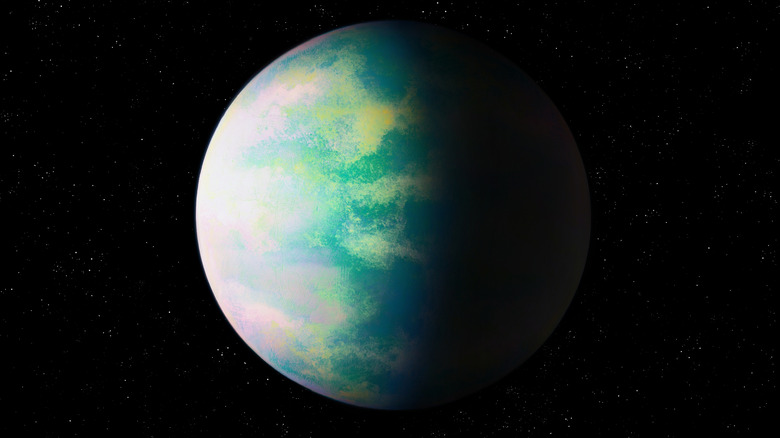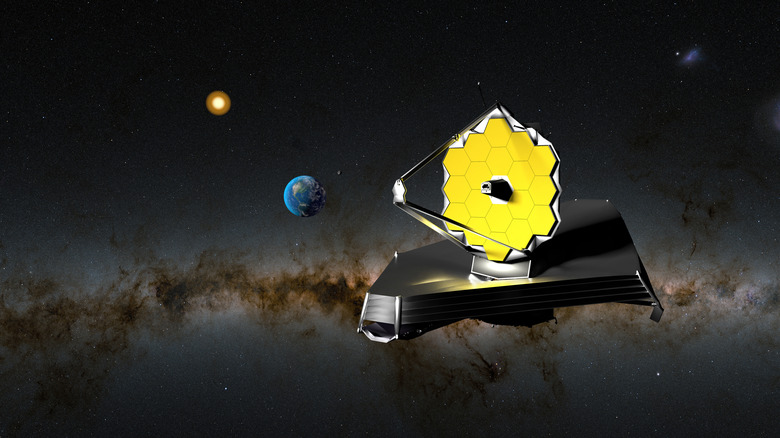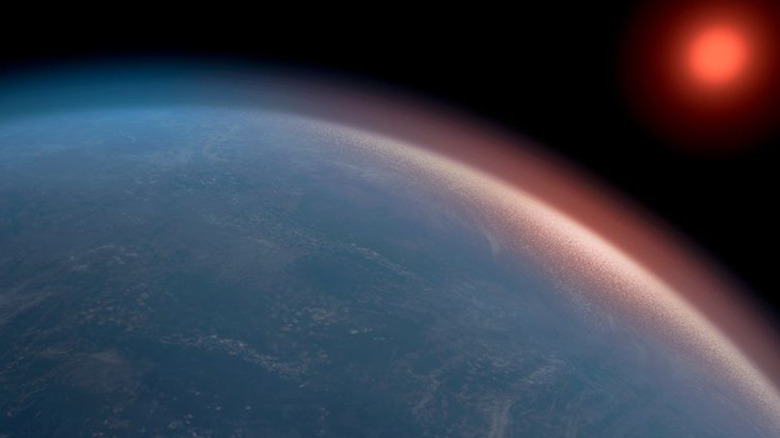The Strongest Evidence Of Alien Life On Another Planet Has Been Found - Here's What Scientists Say
Discovering extraterrestrial life has tantalized the public imagination as far back as Epicurean philosophers in Ancient Greece. Yet despite centuries of speculation, the search for alien lifeforms remains frustratingly behind the starting line. For the most part, the various proclamations have fallen well short, with countless false alarms ranging from alien radio signals to UFO fragments beneath the Pacific giving most a healthy dose of skepticism when evaluating new "evidence" of alien lifeforms. And yet, studies find that belief in extraterrestrial life is at an all-time high, with nearly a quarter of Americans stating that they'd seen a UFO with their own eyes.
But those yearning for credible evidence of alien lifeforms may be in luck, as researchers from the University of Cambridge's Institute of Astronomy claim to have found the most compelling argument yet of extraterrestrial life. The study, published in the scientific journal Astrophysical Journal Letters, states that atmospheric analysis of the planet K2-18b revealed the presence of two gases that, on Earth, are created only by microbial organisms.
The team obtained this evidence using NASA's James Webb Space Telescope, a telescope designed to study the earliest periods of the universe and a key cog in astronomers' search for life beyond our planet. This evidence, it argues, suggests K2-18b, a sub-Neptune planet nearly nine times larger than Earth and 124 light-years away, may be covered by a hydrogen-rich ocean full of organisms like phytoplankton. If confirmed, it would be the first proof of extraterrestrial life and a major leap in man's understanding of the cosmos.
A hycean world
Led by Professor Nikku Madhusudhan, the researchers used NASA's $10 billion space telescope to measure the atmospheric components of K2-18b through a process called the transit method. Used by NASA to discover over 3,000 new exoplanets, an easy way to understand it is to imagine a solar eclipse in miniature: as a planet orbits a star, it reaches a point where it passes directly between its star and the satellite, temporarily blocking some of the starlight reaching the telescope. Interestingly, the light changes color as it passes through the atmosphere, allowing scientists to measure its size, temperature, and chemical composition.
Madhusudhan previously made headlines in 2023 when his team used this method to discover the presence of methane and carbon dioxide in K2-18b's atmosphere –- the first ever found in an exoplanet located in a star's habitable zone. This isa strong indicator that the planet could be hospitable. During this study, the team also found small traces of dimethyl sulfide, a compound made of sulfur, carbon, and hydrogen, which astrobiologists have long considered a potential indicator of extraterrestrial life.
This time, looking at a different set of wavelengths, Madhusudhan found stronger evidence — up to a supposed 99.7% certainty — that K2-18b's atmosphere contained two gases typically generated by lifeforms like algae: dimethyl sulfide and dimethyl disulfide. According to Madhusudhan, this evidence suggests that K2-18b is a Hycean planet, a name used to describe exoplanets covered by a hydrogen ocean potentially teeming with life.
Optimistically skeptical
While scientists applauded Madhusudan's work, they also remain skeptical. For starters, some are wary of the study's novel use of the James Webb Telescope, noting this type of data was difficult to obtain and decipher. Others, like Director of the Seti Institute's Carl Sagan Center Nathalie Cabrol, expressed concern over the data itself, it comes with several caveats. For instance, not only were the detection levels low enough to be a false positive, but the gases' infrared indicators were so similar that the telescope couldn't distinguish between them. Stephen Schmidt, an astronomer at Johns Hopkins, likewise noted to the Scientific American that the findings were "pretty noisy," possibly a result of "statistical fluctuations." The researchers, for their part, state that there is a .3% chance of statistical error, well below the 0.00006% typically required of scientific discoveries.
The study's conclusions are also somewhat controversial. While dimethyl sulfide and dimethyl disulfide are formed on Earth exclusively by living organisms, it doesn't mean they cannot be made abiotically. In fact, scientists have found several instances of such, even once discovering them on a lifeless comet. One paper posited that an inhospitable magma ocean could also produce these gases on K2-18b. Such arguments highlight the greatest concern regarding the study: it's missing the planetary context necessary to adequately evaluate its results, like the composition of the planet's surface or atmosphere.
Madhusudan, for his part, cautioned that additional observations were required to confirm his team's results, particularly the need to investigate the potential abiotic production of dimethyl sulfide and dimethyl disulfide. With these caveats in mind, the Cambridge study's lasting impact may be that it kicks off an exciting era of experiments centered on K2-18b. Whether it results in the ultimate discovery, however, remains to be seen.


